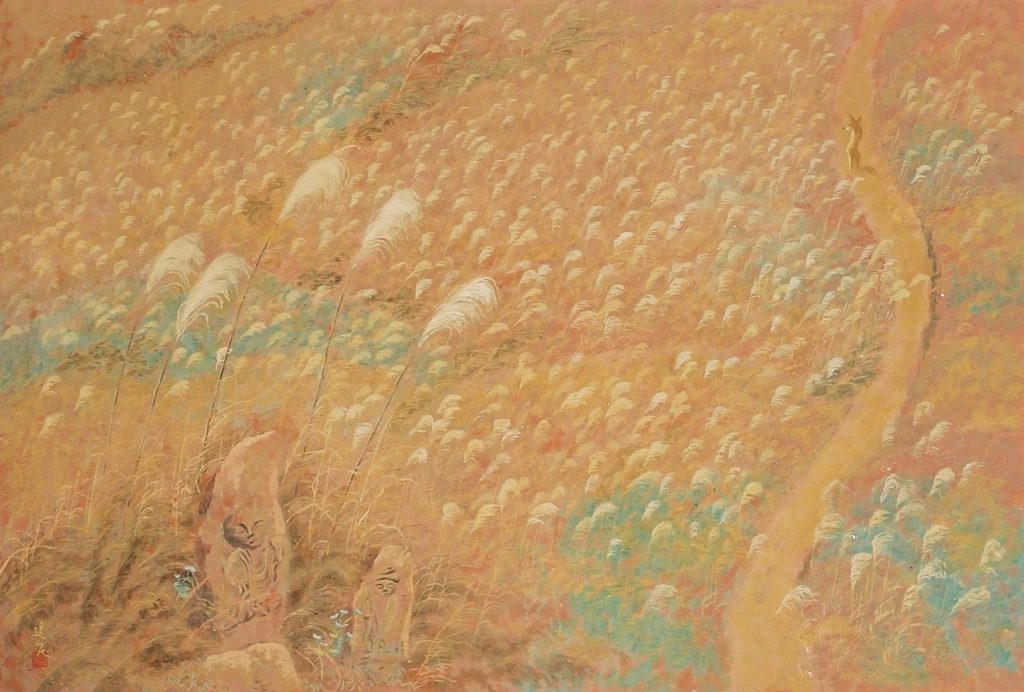Exhibitions
Sentimental and Inspirational: The Journeys of the Artists

Travel has long been a source of inspiration for artists. Japanese artists have also roamed to various places and used the experience to fuel their own creativity. This exhibition tracks the footsteps of these itinerant artists using Umi-Mori Art Museum’s collection of early modern and modern Japanese paintings.
The exhibition is divided into four chapters. Chapter 1 is entitled “The Journeys of the Poets” and it features works depicting the travels of master waka and haikai poets from the Heian period to the Edo period. Chapter 2 is themed on “The Travel Recollections of the Artists.” It features the sketches that Takeuchi Seiho and other modern painters produced as records of their journeys. It also displays the picture postcards they brought back and the travel bags they used, for instance. These items convey a vivid sense of the things these artists witnessed and the feelings they evoked. Chapter 3 is called “Paintings Inspired by Travel” and it explores how painters took their travel experiences and channeled them into artistic creation. The last chapter is entitled “The Peripatetic Painter Ikeda Yoson” and it introduces the paintings of Ikeda Yoson, a nomadic artist whose reverence for the great painters and poets of yore saw him travelling three times along the Tokaido highway, for example.
The artists in this exhibition lived in different times, but their footsteps connect in a way that transcends time. This is apparent in the way Matsuo Basho traced Saigyo’s tracks during his voyage to the northeast, with Yosa Buson then depicting Basho’s travels in paint and Ikeda Yoson inspired to create imaginary landscapes by Taneda Santoka, a poet deeply influenced by Basho. All this reveals how each artistic generation was inspired to travel and create by the voyages of their predecessors. Each artist had their own reasons for travel. Poets were driven by a longing to see famous sights from the poems of the ancient masters, for example, while painters voyaged to sketch uncharted landscapes. This exhibitions uses art to explore the various factors that motivated these artists to venture afar.
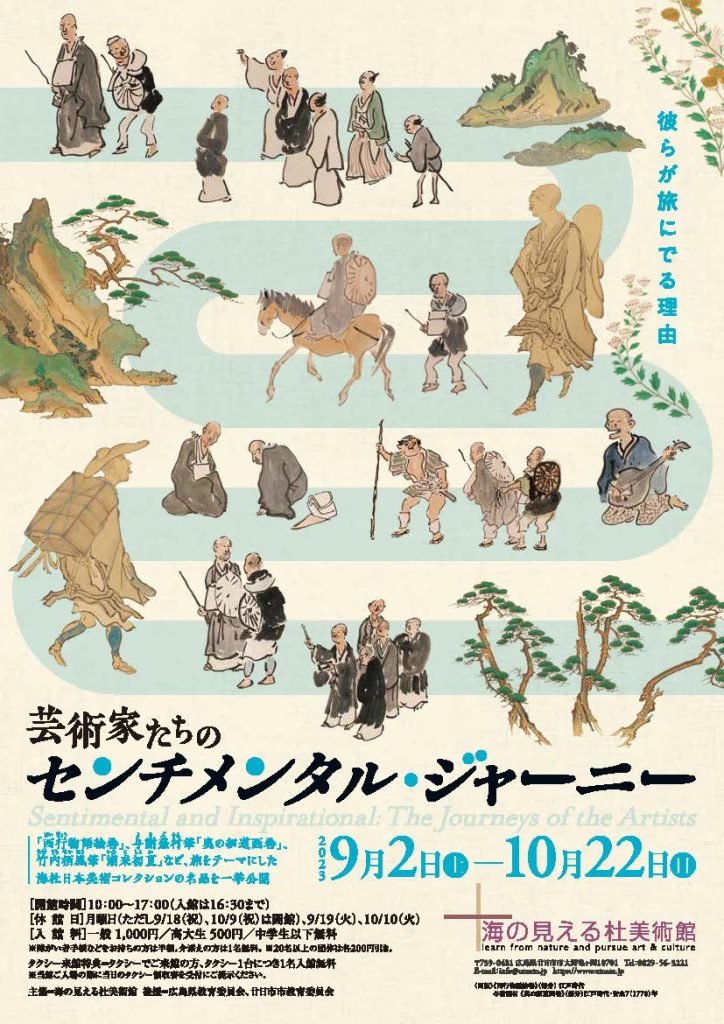
General Information
Hours: 10:00-17:00 (Last entry: 16:30)
Closed: Monday (except September 18th and October 9th), and September 19th, October 10th
Admission: General admission: 1,000 yen, High school/university students: 500 yen, Junior high school students and younger: Free
*Admission is half price for people with disability certificates, etc. One accompany person is admitted free of charge.
*Groups of 20 or over will receive a discount of 200 yen per person.
Venue: Umi-Mori Art Museum (10701 Kamegaoka, Ohno, Hatsukaichi, Hiroshima)
With the support of: Hiroshima Board of Education and Hatsukaichi City Board of Education
Chapter 1: The Journeys of the Poets
Long ago, when voyaging to far-off lands was considerably harder, poets would be driven to travel by a yearning to visit famous places or locations mentioned in waka poetry. Azumakudari, a well-known chapter from The Tales of Ise, tells the story of the Heian-period poet Ariwara no Narihira (825–880) and his sorrowful journey to the East after leaving the capital Kyoto. When the poet Saigyō (1118–1190) left the secular world behind to travel east, he toured around the famous locations mentioned in Narihira’s poems. Matsuo Bashō (1644–1694) subsequently traced Saigyō’s footsteps while journeying north to Oshu and Hokuriku. These poets were driven to travel and compose by the allure of distant sights and a fascination with the voyages of their ancient predecessors.
This chapter uses paintings to explore how these poetical journeys touched the hearts of later poets and inspired the creation of new works.
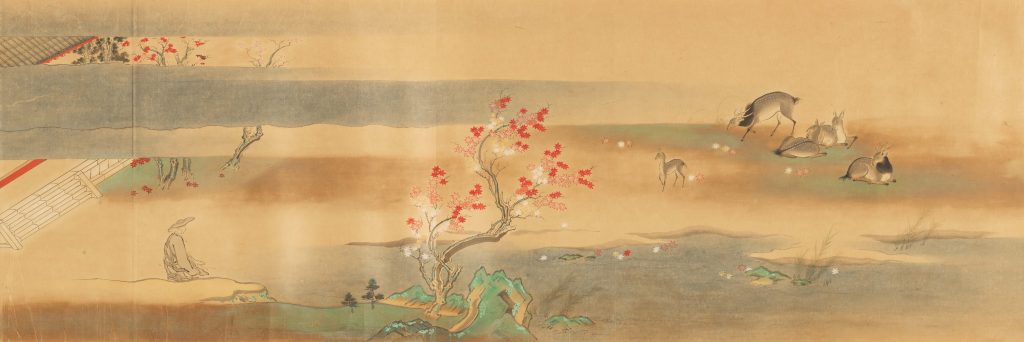

Chapter 2: The Travel Recollections of the Artists
Travel became easier with the removal of checkpoints and the evolution of means of transportation. From the Meiji era (1868–1912) onwards, artists voyaged across Japan and even overseas. They each had their own reasons for roving. Some went to gather materials for paintings, some accompanied the nobility to create records of their trips, and others journeyed West to view international expositions or works of western art. Their sketches and the materials they gathered provide a vivid snapshot of the things they witnessed and the feelings they evoked. Even with impromptu sketches, the unique aesthetic sensibilities of the artist are still apparent in the composition and so on.
This chapter explores the sights and scenery encountered on these trips. Please enjoy these artistic recollections of the new feelings stirred up by travel.

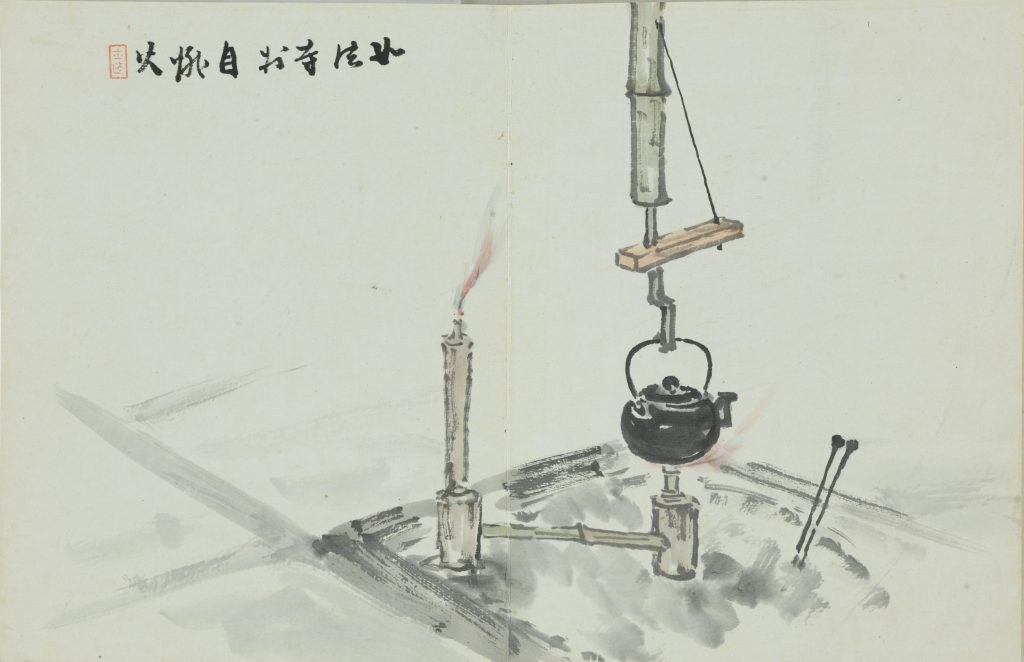
Chapter 3: Paintings Inspired by Travel
This chapter features works by modern painters inspired by the places they visited. These included long-cherished famous sights, though artists would also voyage off the beaten track to discover their own favourite spots too.
Takeuchi Seiho (1864–1942) travelled to renowned sights to view and paint them himself. These included Mount Fuji, as witnessed by Ariwara no Narihira on his journey to the East, and Basho’s beloved Matsushima. In doing so, he breathed new life into these traditional painting subjects. He also travelled to Itako in Ibaraki Prefecture. Itako had rarely featured in paintings before, but Seiho discovered a certain picturesqueness in its landscapes. Meanwhile, Komatsu Hitoshi (1902–1989) travelled to Izu and was moved by the magnificence of the Pacific Ocean and the rolling mountains there, with these feelings later transferred freely into his paintings.
This chapter explores how painters took their travel experiences and channeled them into artistic creation.
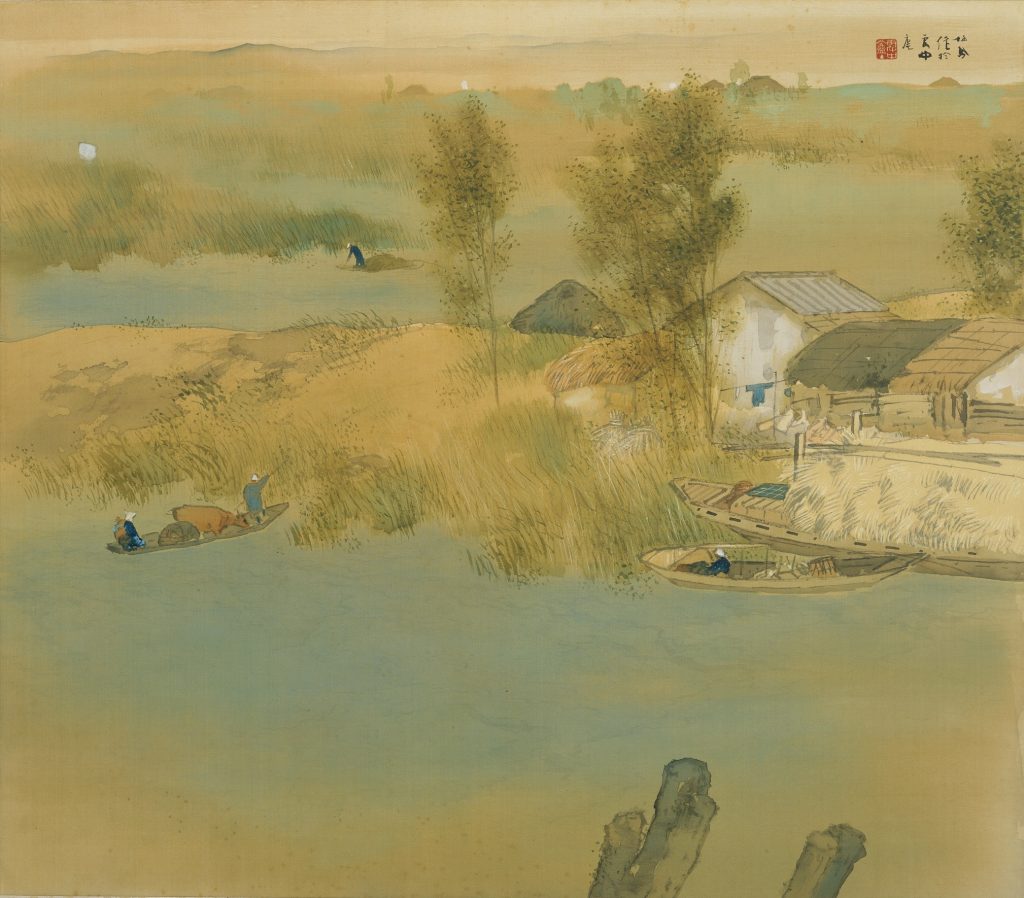
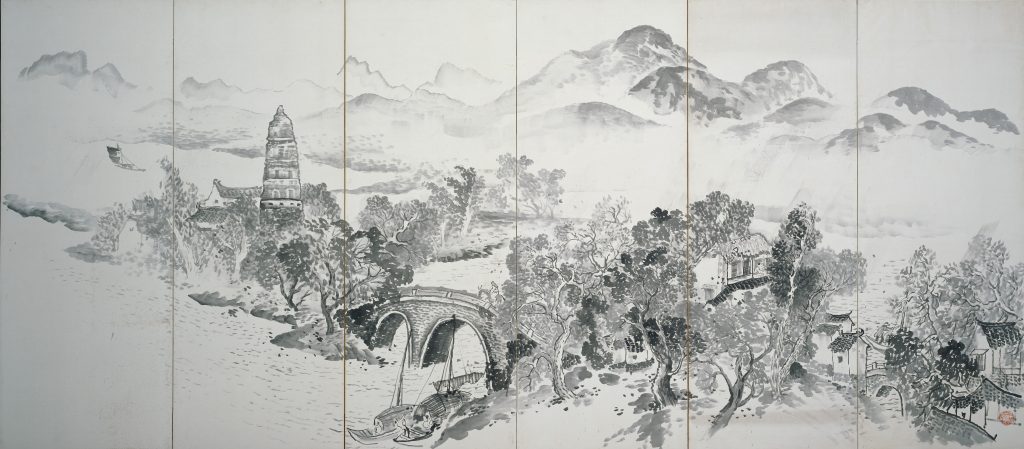
Chapter 4: The Peripatetic Painter Ikeda Yoson
The painter Ikeda Yoson (1895–1988) was born in Kurashiki and he studied under Kyoto’s Takeuchi Seiho. He loved to travel and he left behind many depictions of the places he visited. From an early age, he admired Kyoto’s painters and he would also voyage afar to sketch distant scenery. His later admiration for the Edo-period ukiyo-e artist Utagawa Hiroshige (1797–1858) saw him tracing Hiroshige’s footsteps by traversing the 53 stations of the Tokaido highway, with this experience inspiring his masterwork The Showa Fifty-Three Stations of the Tokaido. At age 89, he began his “Santoka” series, a work inspired by the haiku poetry of Taneda Santoka, another lover of travel. Age put paid to the idea of recreating Santoka’s journey himself, but Yoson was still driven to create by his reverence for the poet and his ceaseless longing for travel.
During his long career, Yoson was moved to following in the footsteps of a diverse range of artists, with his painting style also evolving along the way. This chapter uses landscapes inspired by Yoson’s travels to take us on a journey along the long road travelled by the great painter.
